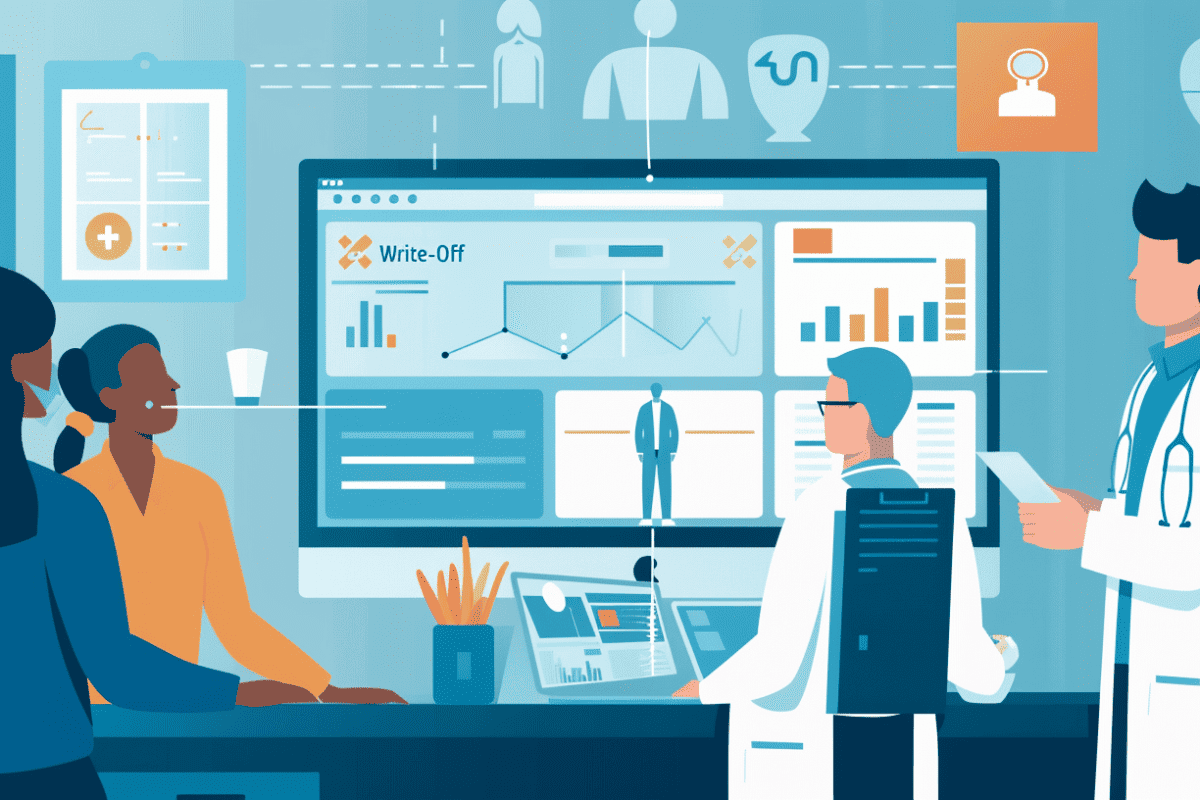The “How”
In Part 1 of this series, I debunked common misconceptions around using data to improve clinical trials.
In Part 2, I discussed the validation of
Now, in Part 3, I’d like to look at how pharmaceutical companies can actually build a step-by-step plan for implementing data-driven and agile clinical trial processes that will save time and money.
In an attempt to strip down a highly complex approach, here’s an actionable 9 step approach to building this kind of system in your own company:
1. Gather a strong, multi-disciplinary team.
First, pull together a clinical team to design your study. Bring healthcare design experts and user experience professionals into the room, too, to help you ideate on other metrics that will help you find new impact measures, especially in the health outcomes area.
2. Choose clinically relevant data endpoints.
After preliminary conversations about launching this kind of program, it’s important to select the right data points. Usually, this involves looking at patient-reported data, environmental data, behavioral data, physical activity data, claims data, and other EMR data to gather a full picture of patient care.
With the team you’ve built, define the critical data endpoints that will help you measure drug safety and efficacy. It’s also important to generate initial assumptions to test during the trials and to select data endpoints that will help you test those assumptions.
3. Select best-in-breed data collection devices and “one-click-away” patient support services
Once your team has established key data endpoints, it’s time to start looking for the devices that will empower you to make that happen. As we reviewed in Part 2 of the series, best-in-breed
Start by looking for devices or vendors that can collect the data you need. Assess if the devices will produce medical-grade data, and confirm that the results will be reproducible with an acceptable margin of error. Also, think about the human experience of the tool. How easy will it be to use it? Does it provide a good user experience? Does it require training? Does is require assistance from a caregiver? Is it easy for the patient to report an outcome? Does it collect data without disrupting the patient/user daily routines?
4. Design an acquisition and recruiting plan using digital tools.
One of the biggest challenges for the pharmaceutical industry is finding patients to enroll in clinical trials. Often pharma companies have to reach a certain quota for trials, but the recruitment process is cumbersome – it can take years.
Now, though, companies can use social media keywords to find potential patients or research subjects “in the wild,” which speeds up the process. Social media allows you to reach a much bigger audience, turning a cumbersome process into a seamless one using external tools.
5. Build a platform for that data.
Ideally, you’ll want to architect a platform that is able to ingest data from multiple data sources, clinical interfaces, and connected devices, even if they have different data standards. That platform should allow you to normalize all the data, making it usable in a uniform way and allowing you to analyze the various data points together.
6. Build an analytics engine with preventative and prescriptive analytics capabilities.
With this much data available for use, platforms should be able to analyze and collate the information gathered to find out if a patient is at an increased risk for a health episode. In addition to this, you’ll also want to use an analytics engine that can generate alerts based on those predicted risk factors. This system should have triggers and alerts designed to give a care team enough time to react quickly.
7. Design a rules engine that can trigger alerts and push automated content.
Once you have generated a system that can identify risk factors and emergent health events, you’ll likely start to see a pattern of risk on a patient’s profile. Based on that pattern, you can create rules to push content to a patient, ideally prompting them to change their behavior in a certain way. This could be as simple as an SMS alert to someone on the care team, but when those risks show up, there should be a repository of content in your system to allow for an automated, educational, effective response.
8. Design an insights dashboard.
Patients are usually monitored by a team of health professionals, not just by one person. The challenge then is that patient dashboards often provide too much data that is not actionable or relevant to certain professionals. What you need to do, then, is to sit down with different members of the care team to talk to them about what data is most crucial for them, personally, to see on an insights dashboard. Personalized design is king.
9. Build patient outreach capabilities to adjust treatment plans.
This is where the human factor comes in: You have automated alerts built in, of course, but at the end of the day, human contact drives patient behavior. When you build solutions, you can’t disconnect the idea of a patient from the human being behind those data points.
This is what patient support programs are all about: creating a unified experience for the patient, one which allows the patient to independently make decisions, but also ensures that someone from the care team is available to validate alerts and provide actionable ways forward at any time.
These machine-based devices and data points can help us reach patients more effectively and more quickly than ever before.
Big picture, this ecosystem allows clinicians to better identify patients who are at risk, which will allow us to act earlier and build stronger preventative care systems. In doing this, we’ll save millions of dollars in unneeded hospitalizations within our healthcare system. For pharma, specifically, this kind of ecosystem will help companies recruit patients more quickly. It will allow for better monitoring of adverse health events, which will allow companies to adjust medication dosing for patients more easily, saving money across the system.
Most importantly, this data-heavy, agile system will allow for a more personalized, patient-centric clinical trial process for each piece of research, and for each patient. It will allow us to determine the efficacy of a drug more quickly than ever before, and at lowered costs. So… what are we waiting for?
If you have questions about using data and digital solutions to inform stronger and more effective clinical trials, please feel free to reach out directly to Adriano Garcez.
Adriano Garcez, MBA
I am a biotech-engineer, health-economics MS, Management and Innovation MBA, consultant, company founder, advisor, mentor, and healthcare innovation zealot. I specialize in patient-centric design for patients, their family, and care providers. I bring to market comprehensive digital solutions that make healthcare effective, transparent and high-quality. My passion is to help the healthcare system deliver the best care to patients focused on high standards of quality and value-based outcomes. To execute on my passion, I work with others across the healthcare ecosystem to explore and create new ways of seeing and finding solutions to old and new problems. I have worked with dozens of life-sciences, pharma, bio-pharma, provider organizations, health innovation accelerators, and private-sector companies to successfully design implement and adopt new technology, processes, and care models. I have deep expertise in finding the best technology and partners to implement and optimize change with measurable impact and improvement. My style is hands-on and suitably pragmatic to find new value-based solutions for businesses, healthcare users, and the healthcare ecosystem. Colleagues describe me as “team-oriented yet with high autonomous capacity, a bond creator, trustworthy and humorous. A very committed individual, passionate and innovative.” People frequently contact me when they need to re-evaluate, design, develop and implement a progressive strategy, optimize existing processes, implement new change and to translate technology or software into real-world clinical value-based operations. My language skills allow me to speak fluently with approximately 2 Billion people. (English, Spanish, Portuguese, French). "There has never been a big achievement that hasn't started with a single step"


